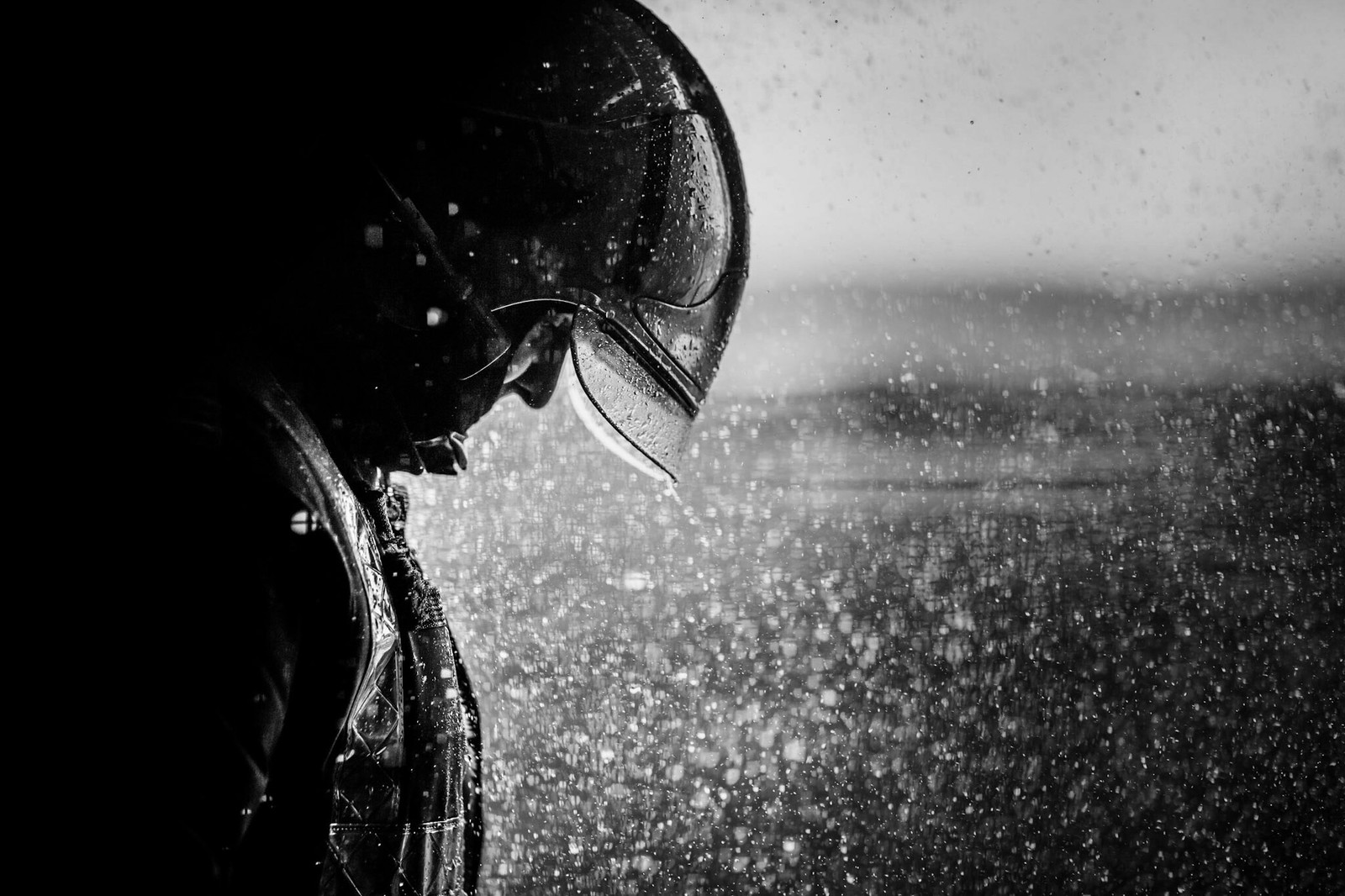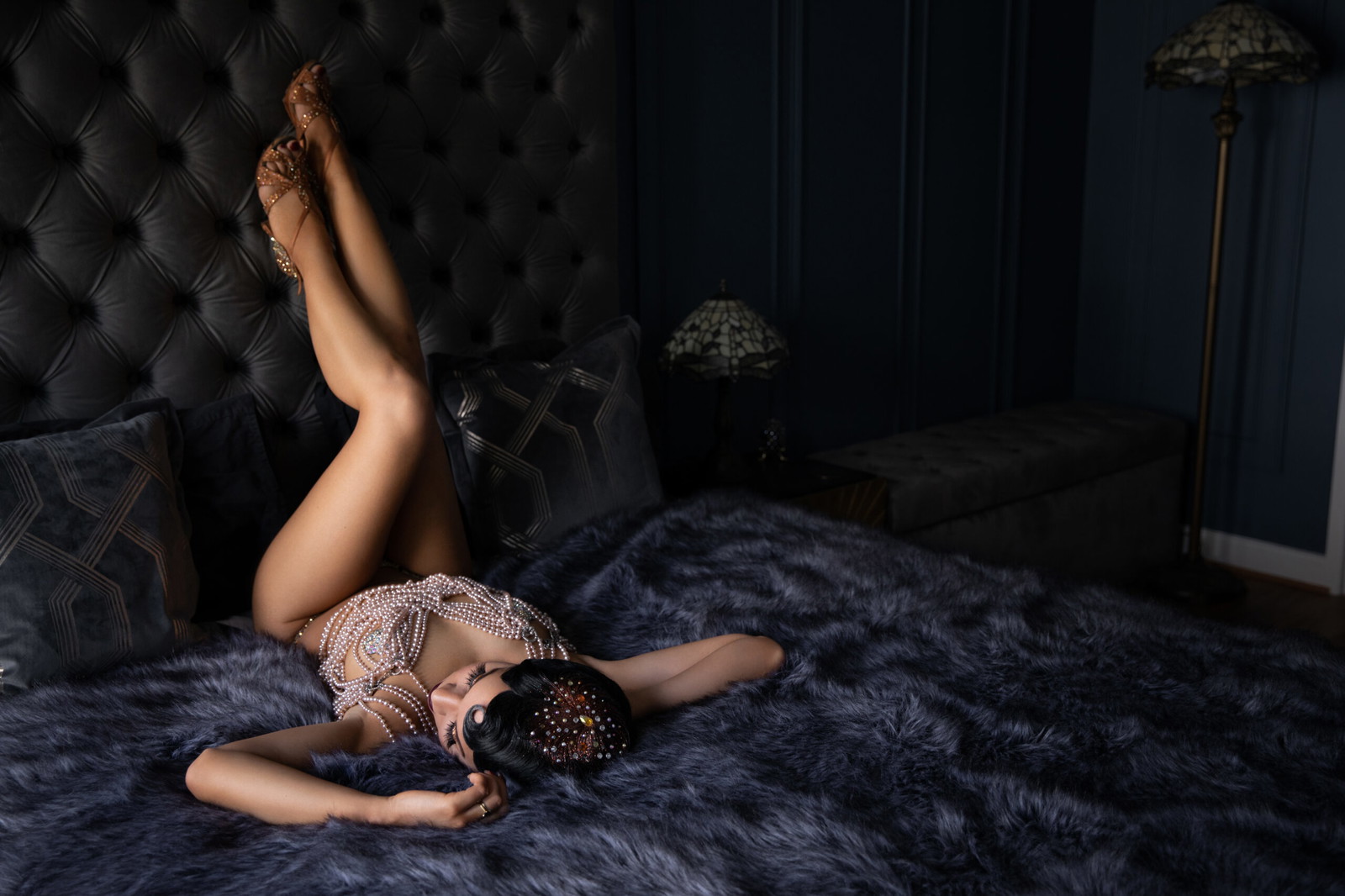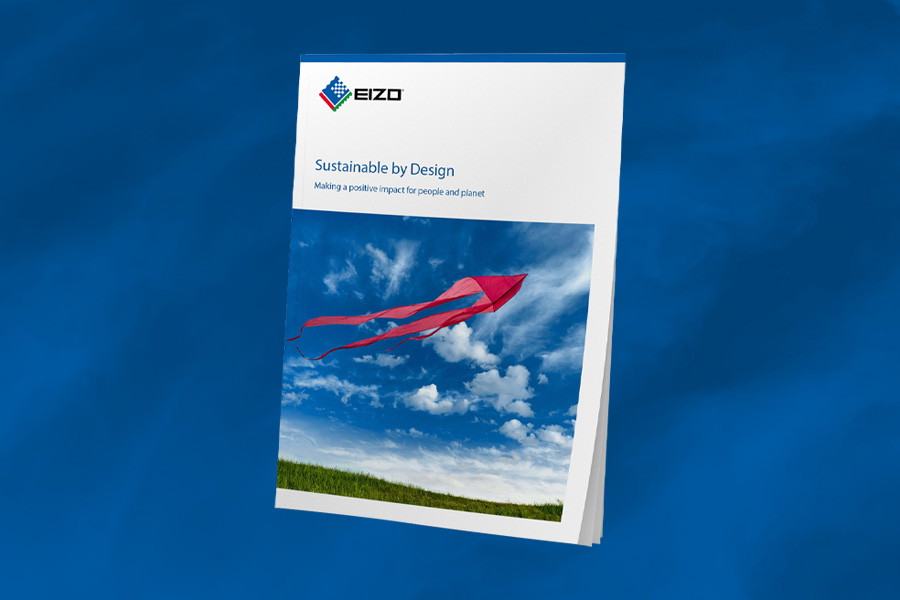EIZO Interviews Hamish Brown

Hamish Brown - Professional Commercial Photographer
In conversation with Mike Owen, Head of Marketing at EIZO UK
Well, that is probably not a surprise as it is not unusual for photographers work to be the cover image of the album or the front page of the book or magazine. If you have heard of Robbie Williams or Anthony Joshua and seen a picture of either of these British Icons, then it is more than likely that you would have seen some of Hamish’s work, but it is probably still one of the best photographers of which you have never heard.
It still amazes me that I could show you a picture which has been on a multi-million selling album or single cover, more than likely you would be able to tell me the artist and the album or single, but if I asked you to tell me who the photographer was, I can almost guarantee that many of us would have no clue, and I include myself in that category. This would be the same for many iconic images over the years, which is a massive shame because the album artwork is as much of an identity of an album as the songs that go on the album, so why do photographers not get the recognition that they often deserve for capturing the essence of the artist or the event that they are capturing, but I think that is a conversation for another day.
Hamish is a long time EIZO user, but we will get to that a little later. I first met Hamish when I was working at Panasonic on the LUMIX camera brand, we had just launched the LUMIX S1R, which has one of the best image sensors I have ever used in a camera (check out the DXO Mark performance of the camera if you don’t believe me), and as part of the launch I wanted to get the product into the hands of some professionals and I was introduced to Hamish. After a few conversations and some comprehensive testing, we have stayed in touch. When I was thinking about the judging panel for the 2023 EIZO Student Awards, I wanted an experienced and credible group of photographers and Hamish was one of the first names on my wish list and I was honoured that he accepted.
Tools in the Creative Toolbox
Hamish explains how he is now firmly in the camp of Canon Mirrorless cameras, but still has a love for a Medium Format camera,
“I grew up in medium format, I love the feel, the look, and the fall off from the lenses. It used to change project by project, invariably if I was in the studio, I would shoot Hasselblad 503cw with a Phase One back, and then have a Canon 35mm (DSLR) for when I was out and about. What seems to have happened over time, and I guess as we have switched to more LED style lighting, I have become much more reliant on the Canon, which has become a go to for me. It’s a double-edged sword. The best way to explain it, is that it’s no longer the case where you can only go up to certain size (on a DSLR), the Canon sensor has phenomenal noise levels, the ISO expandability and the image quality is fantastic. On the downside it’s far too easy to become trigger happy, you always feel a sense of regret at the number of gigabytes filling up the hard drive. I like the Medium Format approach I wish I still used it more often, it does slow down the processing makes it more considered.”
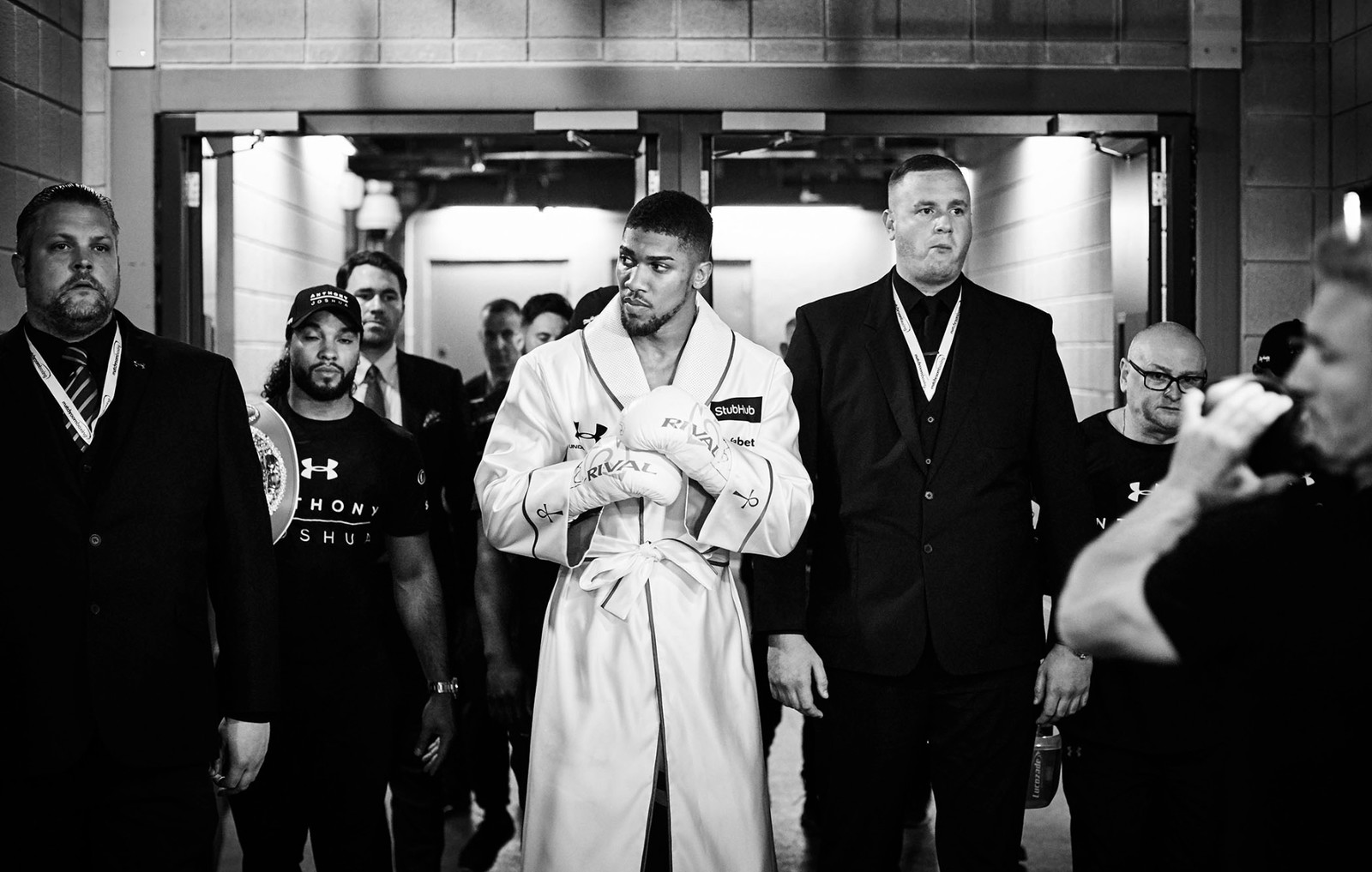
Hearing about wanting to slow down the process, is something that I wanted to dig into a little further I asked Hamish to elaborate on this point, “In the actual shoot it is nice to have a little more time, there is now an added pressure to get even more images than before. I had a shutter on a Hasselblad lens fail. I took it to get repaired and the problem is that the lifetime of that shutter was 70,000 frames, and now some people can probably shoot 70,000 frames in a week! When those shutters fail, it is because they were designed to work with a roll of film that only had twelve frames, now it’s not uncommon to come away from a days shoot with two thousand frames.
Now people can see what’s going on in a shoot via the monitor, clients are wanting more and more variations. I think there’s a strong post shoot pressure to get the finished images to the client that everything is needed yesterday, it’s as simple as that. There’s a lot of burning the candle at both ends of the day because of that expectancy, but you can’t say that to whom you’re shooting for if they’re not part of that stage of the process, they just want to see the pictures, which is fair enough because that’s what they’re paying you for. If you buy a camera or lens, you’re not necessarily interested in the process of how long it took to make. You just want the lens. I don’t want to know that it took nine months to design because that’s not where my focus is. My focus is on the result, and it’s the same for the client.”
Working with the talent
The client is obviously the primary consideration for any job, but with the work that Hamish does and the work that a lot of portrait photographers undertake the relationship with the subject is critical. The shoots can take place in a variety of locations, in and out of the studio and are often as part of press activity, and the talent is often focusing on something else. Hamish still must do his thing and capture the shot of the ‘talent’, “If you’ve got 5, 10, 20 minutes or an hour with the talent, they’ve got to walk into the most comfortable environment, and not feel like there’s 30 people watching them. There is always the exception, I shot Samuel L Jackson by a swimming pool at Wentworth Golf Club. When word went round, he was there, a big crowd gathered to watch. What did he do? He played to it, in a very funny way. There were mums chucking the kids in the pool trying to get them to swim across to where he was standing, and he was just comedy shaming them because he knew exactly what was going on. So, he’d call them (the mum’s) out and it stopped. He was just a master at controlling the situation, no one was offended.

You can go to the polar opposite of that and have a mega star, or similar celebrity that would want the whole place to be shut down so no one could see, there will be a few people in the room, I’ll be one of them, they’ll be the other, and it might be a publicist or a manager. Sometimes people just turn up and do not care, but either way, the right photographic environment is fundamental to make the shoot feel like it’s going to be easy. If the talent isn’t relaxed, it just doesn’t work. I always think the greatest compliment I get from people that I shoot when they leave, is that they say that didn’t even feel like work, “Thank you so much, you made it easy for me.”
Unless you’re a natural poser, it’s not the easiest thing in the world to have your picture taken, personally I’m far better behind the lens. For the vast majority of people, it’s not comfortable, and I’m not talking red carpet stuff where you stand posed, and they’ve all got their moves for the news guys. I want to get the natural ‘them’, that is the key thing for me.
A good case in point is when I shot Steve Coogan, around the time his film Alpha Papa was released. The picture editor, the art director was very insistent that we would be doing “Alan Partridge” for the camera, and it was one of those situations and probably the most awkward photographic moment of my life. Everybody’s in the room, he’s a huge celebrity, his ‘people’ are coming down and setting a panicked tone. He’s on his way. No, he’s not. He’s gone back to change his jacket, and all the comms chat has put everybody on edge. When he comes in and I start explaining what we wanted to do for the magazine by getting into the character of Alan Partridge the Norwich DJ, he just looked straight at me and he said, “I’m Steve, not Alan”.
At that moment everything switches, I’ve just annoyed him with the request I’ve had from the magazine and so I have to reverse that situation and make it work really fast. I look round for a little bit of verbal support and backup, but everybody has just backed off twenty yards, and I was left in the middle of the room with my assistant. Obviously, you’re not going to stand and fight with him because he’d probably walk out, so I just changed my lens to buy myself some thinking time and let his comment sink in. “I’m Steve, not Alan” – The irony is by the end of the photo shoot he went full Partridge.
I had a situation where I’ve shot Quentin Tarantino, when he was promoting one of his films on a press junket. There’s interviews and pictures, almost back-to-back all day and I have five minutes with him and at the end of the interview the journalist said when he had used his allotted time “oh, just one more quick question” and suddenly I had 2 1/2 minutes to shoot with Quentin, coupled with a PR person standing there with stopwatches to make sure everything’s clockwork, because the last thing they want is to have the talent hit the point where he’s had enough.
The hard thing is when you’ve got so little time, and you get the shot where the magazine and everybody’s happy, it becomes a blueprint for things, oh! you can do it in 2 minutes. Why do you need half an hour? Why do you need an hour? It is that mentality shift. Sometimes you wish that it just didn’t work out because then people realise that you need the time to breathe, and so do they.
The reality is that I’ve got no problem with a short timescale. I kind of picked that up from learning the trade with Robbie Williams, realising that preparation was key to the shoot in having everything set up. So, whenever anybody does throw a curveball in, like asking that extra question, you’re not then going to lose time faffing around looking unprofessional.

Just have everything set up so any on the spot adjustments you need to make are minor, go with the flow and even if some equipment goes down, your talent doesn’t need to know about it. If that light is not working use the other one. Have something in position as a back-up that can just seamlessly be moved in, because if you’re telling somebody something’s going wrong, they’re going to lose confidence in the process. I’ve no analogy for that, but it will resonate throughout the image, leaving the talent in frame but their focus somewhere outside of it.”
Knowing your stuff
Listening to Hamish, and in the other conversations we have had with him and other photographers, that the ability to be able to engage your subject and get the essence of the subject in the minutes that they have them in front of their camera is the key to their success. Many photographers may be able to engage with one subject and get one good shoot, but to do it repeatedly, with a number of different subjects is where the skill of a true photographer comes in. The skill of being able to empathise with people who you may never have met, who many people may idolise, who may have an over inflated opinion of themselves, who may be tired, intoxicated or just do not want to be there is a huge part of the job. The other side of the job is the technical side, the ability to use the camera, get the lighting set up right and to ultimately deliver the output that the client and the subject is happy with.
So how does a photographer like Hamish get to grips with technology side, “When I first started in fashion photography, the photographers I knew didn’t seem to even own a camera. They would just rent it on the day, press the button and somebody set everything up for them. I always approached it the opposite way, I wanted to use my camera all the time, I needed to know it inside out because in the heat of a shoot if you’re looking for a button to change something and asking the subject to just hang on a minute whilst you work out what you’re doing, even more so with modern cameras.

On the old Nikon film cameras, they had nothing on them apart from apart from a shutter button, shutter speed, ISO, and that’s it. Now you need to know the menus inside out, most camera systems you can have your favourite’s menu where you create your own list of settings for your most regular things. So, with all of that I still, very often, just completely reset the cameras and then just dial it all back in again because settings get moved, knocked, and changed for different scenarios.
If I was shooting tomorrow, I would spend most of today setting up the session on the laptop, cleaning the hard drives, setting up all the backups beforehand so they can without a problem run on the shoot. I will charge every battery and reset every camera menu. I will go through all my lighting kit, wipe down cables with wipes to remove all the grime they collect, and it just makes everything nicer to use, psychologically, physically and reliably.
Some people call that OCD, I just call it being prepared because if I’m unloading kit ready for a shoot and an assistant is asking where are your cables? Where’s the extensions? Where’s this attachment for this light? I know exactly where everything is. I don’t even have to think about it, it’s all automatic, and then it means you can relax while you’re shooting and focus on what you should be focusing on, the subject.”
The subject of any shoot should always be front and centre of any shoot and making the subject comfortable is the single most important element, if it becomes about the photographer, about the equipment or about the set up then the connection between the photographer and the subject is gone and a shoot that could be weeks or months in the planning can be over before it starts. As a young photographer, it is even more important that you establish yourself, your vision, your reputation, if your subject feels that you are not in tune with your gear then it will become evident quite quickly and any goodwill that you have from your subject will quickly evaporate. Hamish talks me through some of his early experiences, “My first ever studio shoot was a kind of model test. I was so concerned about the lighting and having everything right and looking good was when I came to shoot the model. I am hand holding the camera, which probably wasn’t the best idea, with a waist level viewfinder and suddenly every single frame that I shot that day came back and I didn’t realise this at the time, but the model was just bang central in the frame, every single frame. It was because I was thinking about so much stuff going on. I forgot about the picture.
The big take away for me was just take a breath and think, because if you don’t breathe at the same time as you’re shooting will inevitably stop thinking about what it was you wanted to do naturally and then it becomes forced or not the way you wanted. If you end up in a situation where the elements stacked against you, you’ve still got to walk out of the shoot with the shot, you might have only 10-20 minutes, but you still need to make it look like the talent is relaxed and you’ve had all day.
When you look back at COVID I remember shooting Ricky Gervais in the aftermath, he’s incredibly talented, incredibly professional, but also when we were shooting him, his mind wasn’t in the room all the time because post COVID, he’d got big tours that had already been postponed once or twice and that was all hanging over his head, waiting on whether the new dates are going to get cancelled because every 5 minutes on the news we were hearing there was going to be another lockdown, creating ticketing chaos if you have a massive tour booked. Fortunately, when you’ve got somebody like Ricky Gervais, he’s that good and that professional, he can switch it on when required.

There was a GQ magazine cover with him too, and knowing how much he loves dogs, I took my dog to the shoot. Everybody’s in there early. Everything’s set. You know, we’ve done all the prep when he came through the door of the studio, he saw everybody, and saw my dog, he ignored us all and headed straight for the dog, and that set the tone for the day. If you’re a dog lover or an animal lover, it just puts people at ease. So, I take my dog on a shoot when I can and when he’s needed. Ricky was insistent on getting the dog in the pictures. Dogs don’t care who Ricky Gervais is, and that’s a brilliant thing. Maybe that’s why he talks to dogs more than humans.”
Your face is your timeline
This level of understanding and empathy is important in everyday life, but to engage people who are often put on a pedestal, admired and revered by those around them, it can be difficult to break through the façade of the professional and get to the individual inside the real person, to get that person in the image is critical and by understanding that a dog can break the ice, you can get to the person.
That understanding is what has enabled Hamish to build long standing relationships with many of his subjects, where he has collaborated with them over several years, seen them adapt, develop, and change. Hamish has worked with boxer Anthony Joshua over a number of different shoots and tracked the various stages of his career. The face of a boxer changes over time given the brutality of the sport, with cuts and scars that reflect the fights they have had. Highlighted especially in 2024, a sparring accident in which Tyson Fury received a massive cut to his head which caused a fight to be postponed, Hamish explains “Tyson has had very clearly defined eras of his career so far, whether it’s body weight, whether the beard’s on, the beard’s off and you can see a timeline.
These pictures are from when he’d come back from a big break from boxing and dealing with a lot of mental health issues. In these shots he’s very clean, he’s very trim, he’s got very little excess body weight I guess because he wasn’t building up for a big fight, he looked physically really clean and in great shape.
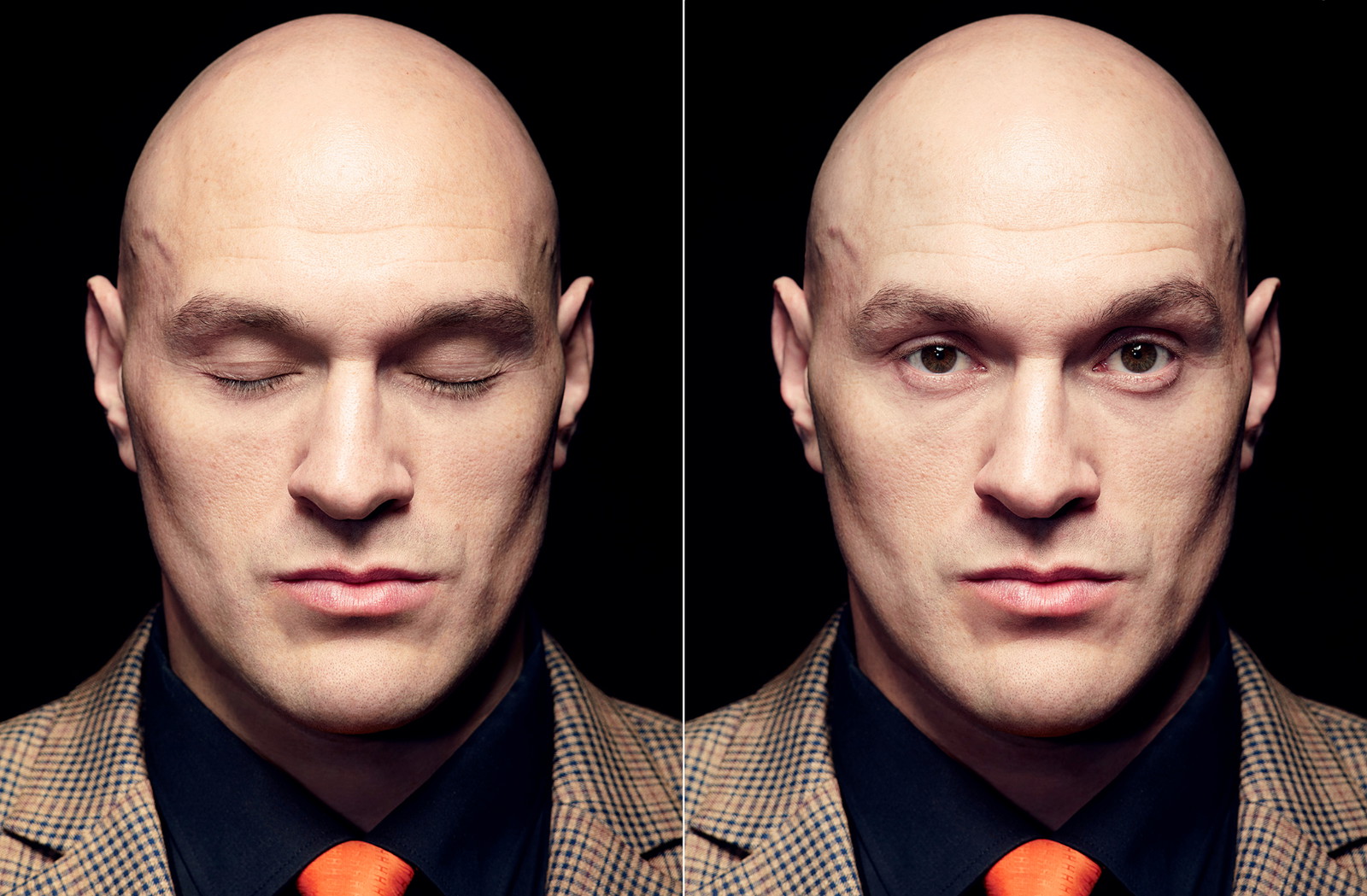
Somebody like Connor Benn that I’ve worked with a lot over the years you can almost date him by the tattoos because he’s now covered in them. When he started, when I first shot him, he had tattoos just not as many. Same with, Robbie Williams as well. I shot him for over 10 years and the body ink just grows and it’s like you almost learn when each one went on, a timeline of their individual story and all their twists and turns.”
Documenting the story of athletes and celebrities, is a creating a timeline of their professional story. As each tattoo went on with Robbie Williams it was a fresh chapter, each new chapter is part of his story. The biggest threat perceived and real by photographers of all genres today is generative AI and the ability of a computer to generate ‘fake’ images and video content, but will AI be able to generate an image of an individual that is accurate to a timeline with beards, tattoos, scars and weight to deal with that can accurately date an image of an individual, I am not so sure. I understand the concern that photographers have, the concern that organisations like the AOP have, but can AI manage the finer details like tattoo’s and scars and will the general public notice or even care about these details, at the moment I think there is still a huge opportunity and requirement for real photographers to capture real people. I asked Hamish about the threat of AI to his work and it would appear that this is a conversation that is being had across the industry Hamish tells me “AI is a thing because you do get asked questions, I talk to my re-touchers about where AI is and the feeling is while it’s incredibly clever, it’s not there yet, for example, you can shoot ‘celebrity A’ in the studio, but if they’re not going to turn up can you just get AI to do it? I think that’s still a long way off, and aside from which you have just completely taken the human element away.
The future lies, for me personally in a combination of both elements. If you’re going to use AI to enhance or create you still need the actual talent because I like to humanise everything because if people lose the human element, it doesn’t matter who you are, and how talented they are, it won’t be a good substitute. You can have the greatest person in the world in their field, whether it’s like music, sport, theatre, acting, film if there’s no human element, it kind of means it means nothing.
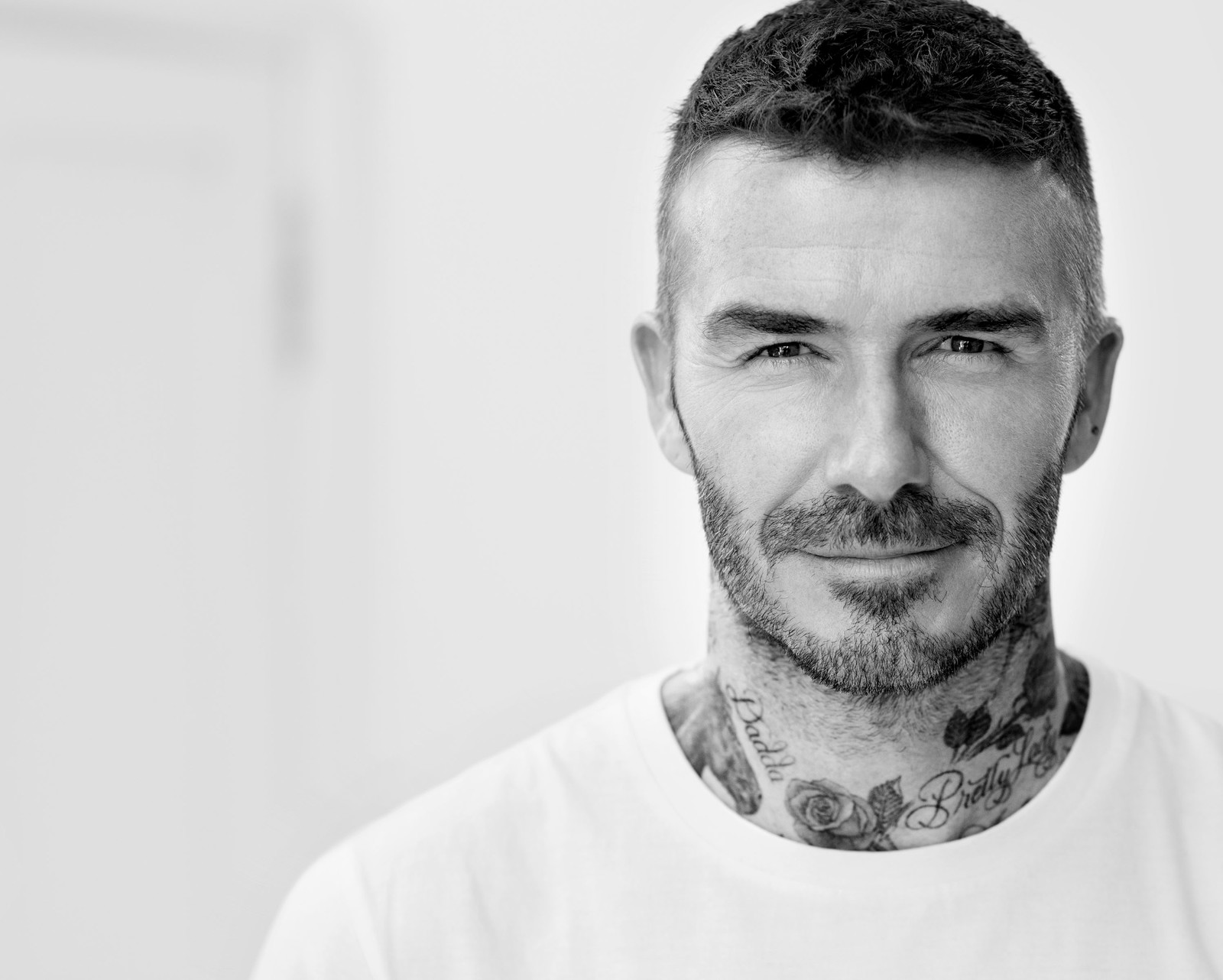
Hamish is right in terms of the human element, the human connection between subject and photographer is as important as it is between actor and director in a movie. We know that actors are used to working in front of green screen so the VFX artists can do their job, but there has always been the criticism that if this is done in isolation the performance can be a little disconnected from the output and I think photography is the same. At the moment there has been a movement for less post-production in stills and there has been a lot of noise about Catherine, the Princess of Wales editing her Mother’s Day image, but for so long there has been criticism of too much Photoshop on commercial shoots, and trying to bring more reality but this is now shifting with AI once again, so the messaging around this is very confusing for the commissioners of photographers, the models and the subjects of photography and of course for the creatives themselves who feel that their careers are being shut down, which coming off the back of COVID and the squeeze of rates that photographers across genres are currently able to command for their work.
EIZO as part of the creative toolbox
At EIZO we want to support the work of all manner of creatives because regardless of the type of creative work you undertake, you need a screen that is able to show your work in an optimum manner, whether that is through the calibration of the colour that your screen is able display, the consistency of your image across the screen or the confidence that your EIZO screen can give you over the duration of your ownership. When I was talking to Hamish about his screens, I had not seen the model’s he owns because they were before my time at the company, but the CG277 is the screen that goes out on each and every shoot with him, while the CG247 stays in the studio, but both screens are still doing the job for Hamish. He knows through the ColorNavigator software that his screen will be colour accurate when he needs them to be, as he explains “Do you know what? It’s one of those things that for as long as I can remember, I’ve not owned another monitor. I was thinking about this, that they’ve become such a part of life. I don’t want to say industry standard because they’re not standard, they are amazing. The reason I got into EIZO is every re-toucher that I went into was essentially on an EIZO.
When you consider that I have worked through the transition of film to digital. Obviously, the early days of digital being film scans, retouched, et cetera, it was kind of understanding that colours needed to match and very from very early on. You now have your calibrator, and you’d have all your settings the same as your re-toucher, and that gave you confidence in a world you can’t control. To know that whatever you were supplying to your client, to magazines, to whoever was as you intended, it was correct. It was a steep learning curve, and if you wind the clock forward to the current day, you have ColorNavigator and you’ll have to insert the technical term here, but the little (colour calibrator) thing that pops up at midnight and does your calibration. It’s taken all the worry and the strain out of the equation is the easiest way to put it because, I had to look up which EIZO I have, because you almost forget it’s there because it’s so seamless.
Looking back a few years, I would set a reminder every month just to recalibrate to make sure everything was in order, and I would screen grab my monitor settings, share them with my re-touchers and they would send me back what they’ve got and just go from there because at the end of the day when you’re throwing words like gamma in front of photographers that haven’t necessarily studied that side, will you need to find out, what gamma meant, but now it’s kind of it’s almost at that point that it’s just like a done deal. I don’t want to call it plug and play but it is plug and play. It is without doubt the professional standard.”
An EIZO screen alongside ColorNavigator is a part of their workflow, but the creative workflow is only the creative workflow thanks to the incredible work of creatives like Hamish, like Tigz and like the other creatives across the various types of creativity that consider EIZO to be part of their creative toolbox, and we are honoured to be able to join them on their journey.
Website: https://www.hamishbrown.com/
Instagram: @hbsauce14
The State of Sustainability in UK IT Teams
Sustainability is front-of-mind for most of the public with 70% of people wanting to see businesses take more action on climate change.
EIZO Monitors: A Legacy of Innovation, Quality and Sustainability
Choose an EIZO monitor and do not just settle for the basic screen that normally comes as standard with the computer.
Why should I choose an EIZO monitor?
If your organisation values quality, longevity, and sustainability, you should choose an EIZO monitor.
EIZO Interviews Clive Booth
Clive Booth is a commercial photographer who has worked for many iconic luxury brands, he has photographed celebrities and shot films around the world.
EIZO Interviews Tigz Rice
Long-term EIZO user Tigz Rice, who has established herself as one of the leading empowerment photographers with an incredibly successful career shooting
EIZO ColorEdge PROMINENCE CG1 Product Showcase
EIZO releases 30.5-inch ColorEdge PROMINENCE CG1 true reference monitor with built-in calibration and advanced interfaces for efficient creation workflows.
EIZO FlexScan EV4340X Product Showcase
Discover EIZO's largest FlexScan EV4340X monitor with built-in USB Type-C dock for business professionals.
EIZO FlexScan EV3450XC Product Showcase
EIZO Unveils Its First Ultrawide, Curved Monitor with Built-In Webcam, Microphone, and USB Type-C Dock for Business Professionals.
UK EIZO Student Awards 2022
The EIZO Student Awards is an annual competition hosted in the UK that provides students studying photographic and filmmaking courses an opportunity to showcase their talent and develop real life experience that will hopefully give them a head start in the creative industry.
Sustainable by Design
At EIZO believe that we have a duty to do what we can to ensure the future of our planet, so everything we do is ‘Sustainable by Design’.
Small Streams Make a Mighty River
Sustainability is becoming more important to individuals and companies alike, and if we all take a few small steps, we can all move towards a more sustainable future.







